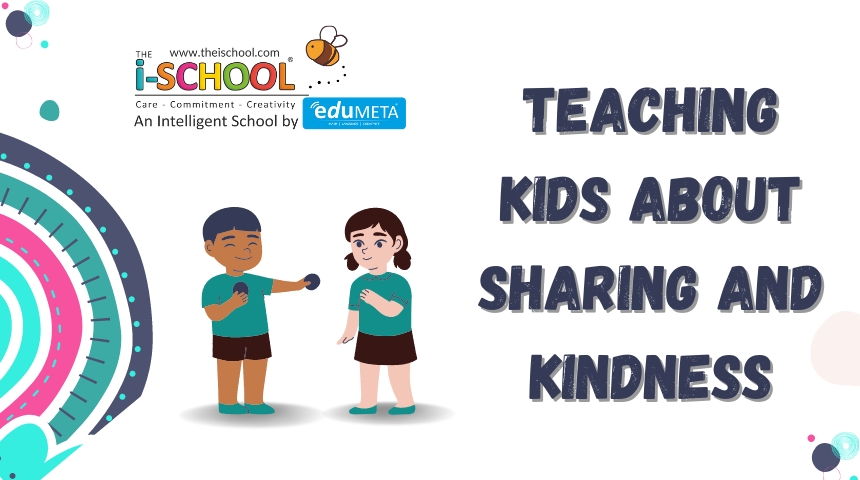Teaching Kids About Sharing and Kindness

In a world that often emphasizes competition and individual success, teaching children about sharing and kindness is more important than ever. These values are not only essential for building strong relationships but also for fostering a sense of community and empathy in young minds. Here’s how you can guide your child in understanding the importance of sharing and kindness.
1. Start with Simple Acts of Kindness
- What to Do: Encourage your child to perform small acts of kindness daily, such as helping a sibling with a task, sharing a toy, or offering a compliment.
- Why It’s Important: These simple actions help children understand that kindness can be expressed in many ways and that even the smallest gesture can make someone’s day better.
Example Activity: Create a “Kindness Calendar” where each day your child does something nice for someone else. At the end of the week, discuss how these acts made them feel.
2. Model Sharing in Everyday Life
- What to Do: Demonstrate sharing in your daily interactions, whether it’s sharing a meal, dividing tasks, or letting others go first in a line. Explain to your child what you’re doing and why it’s important.
- Why It’s Important: Children learn a lot by observing the adults around them. By modeling sharing, you show them that it’s a valued behavior.
Example Activity: During playtime, encourage your child to take turns with toys. Use phrases like “It’s your turn now, and then it will be your friend’s turn,” to reinforce the concept.
3. Read Books About Sharing and Kindness
- What to Do: Incorporate books that focus on themes of sharing and kindness into your child’s reading routine. Discuss the stories afterward to reinforce the lessons.
- Why It’s Important: Stories are a powerful way to teach children moral lessons. Through the experiences of characters, kids can see the positive outcomes of sharing and being kind.
Recommended Books: Look for titles like “The Rainbow Fish” by Marcus Pfister or “Have You Filled a Bucket Today?” by Carol McCloud, which are excellent resources for teaching these values.
4. Praise and Reinforce Positive Behavior
- What to Do: Whenever your child shares or acts kindly, praise them for their behavior. Positive reinforcement helps them understand that these actions are valued and appreciated.
- Why It’s Important: Children are more likely to repeat behaviors that are positively acknowledged. By reinforcing kindness and sharing, you encourage them to make these behaviors a habit.
Example Activity: Create a “Kindness Jar” where your child adds a token each time they share or perform a kind act. When the jar is full, reward them with a special treat or activity.
5. Teach Empathy
- What to Do: Help your child understand how others feel by discussing emotions and the impact of their actions on others. Ask questions like, “How do you think your friend felt when you shared your toy with them?”
- Why It’s Important: Empathy is the foundation of kindness and sharing. By teaching your child to consider others’ feelings, you help them develop a deeper understanding of why these behaviors matter.
Example Activity: Use role-playing games where your child pretends to be in someone else’s shoes. Discuss how different situations might make them feel and what kind actions they can take.
Teaching children about sharing and kindness is an ongoing process that requires patience, consistency, and love. By incorporating these values into everyday activities, modeling positive behavior, and providing opportunities for practice, you help your child develop the social and emotional skills they need to build strong, caring relationships. Ultimately, these lessons will help them grow into compassionate, empathetic individuals who contribute positively to their communities.
